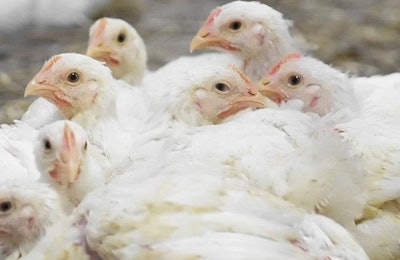
In a rare week in which no country has officially reported cases of highly pathogenic avian influenza (HPAI) in poultry, the authorities in the Philippines and in Italy have been taking action to prevent further outbreaks.
With many wild bird migrations about to start, this may just be the lull before the next HPAI “storm.” Indeed, the virus has been detected in the wild bird populations for the first time in recent months in South Africa and Switzerland.
Asia: Philippines culls half a million birds
As a result of the country’s first ever outbreak of HPAI, half a million poultry are scheduled to be culled in the Philippines, reports Philippines Star. It has been confirmed that, with the assistance of the army, 92,000 birds have been dispatched.
So far, the disease appears to be contained in the region of Central Luzon, where cockfighting has been banned for two weeks because this activity involves movements of birds from one place to another.
Under apparent pressure from local farmers to reconnect the supply chain, Agriculture Secretary, Manuel Piñol, has announced that the shipment of poultry from Luzon to other regions of the country could resume as soon as early September if there are no further detections of the virus in the meantime. Biosecurity teams set up by the Department are inspecting poultry farms nationwide.
Africa: HPAI detected in wild birds in South Africa
For the first time, South Africa’s animal health agency has reported the detection of the H5N8 HPAI virus in wild birds. According to its report to the World Organisation for Animal Health (OIE), five birds from Mpumalanga tested positive for the virus in July. This is one of the country’s three provinces affected by recent HPAI outbreaks in commercial poultry or ostriches.
Libya’s agriculture authority has sent its final report to the OIE following the detection of a low-pathogenic H7 avian flu virus at two farms in the north of the country in May of this year. Since that time, nationwide surveillance has revealed no further signs of the virus. Illegal movement of birds was blamed for the outbreaks.
No new HPAI outbreaks in poultry in Europe
Culling, cleaning, and disinfection have been completed on all the farms known to be infected with the H5N8 HPAI virus, as well as other at-risk premises, reports the Italian health authority and research organization for animal health and food safety (IZSVe). The most recent outbreak, which was confirmed on August 13, was the country’s 29th so far this year.
Since the disease returned to Italy in the third week of July after a two-month absence, 13 farms and a total of almost 789,000 poultry have been directly affected by outbreaks. The majority of birds were fattening turkeys and laying hens.
Veterinary authorities in Switzerland have reported to the OIE that two wild swans found dead have tested positive for the H5N8 HPAI virus. The birds were in the canton of Vaud, which is in the east of the country, and borders France.
China: No change in human avian flu cases
Hong Kong’s Centre for Health Protection reports that there have been no new confirmed cases of avian influenza A (H7N9) in China over the last week. The global total remains at 1,558 since March of 2013, and Mainland China’s count at 752 since October last year.

















